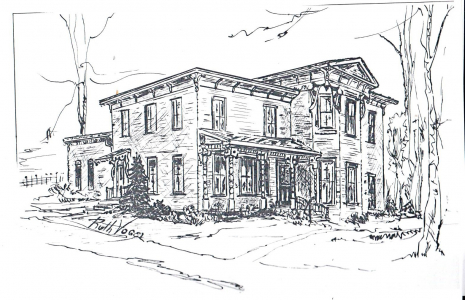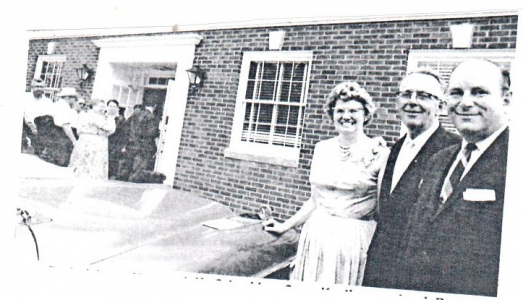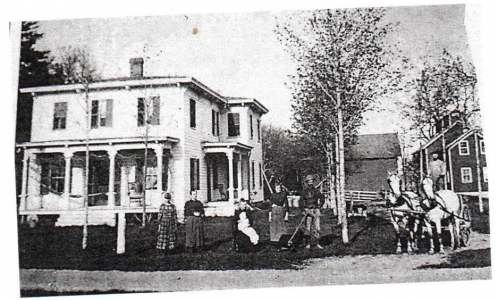Clay Train WreckPosted on May 11, 2021 |
Image
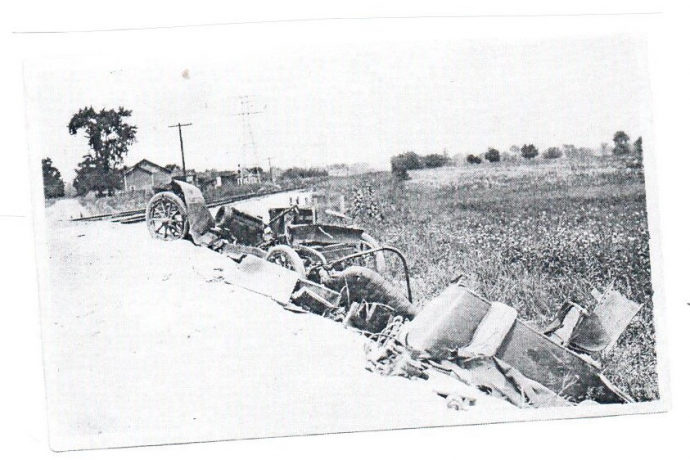
|
HISTORY MYSTERY: Clay Train Wreck
The first serious casualty that occurred since the construction of the Northern Railroad which traveled through Clay happened in 1874 on a morning about five o’clock at the drawbridge over the Oneida River to Brewerton. The unfortunate train was the regular morning passenger train from Syracuse, going north, which left at four o’clock in the morning. It was in charge of Conductor Edward S. Church and drawn by the engine “Syracuse” of which Eugene Wiggins was the engineer and Charles Miller was the fireman. The locomotive had just been converted from a wood to coal burner. This was its first trip over the road and the first attempt of the engineer and fireman at running a coal burner.
The train stopped at the south side of the bridge over the Oneida River for water. While taking water, some of the passengers got out and walked about and discovered the danger signal was set at the bridge. Several of them asked the conductor what the draw was open for. After taking in water and conducting train business, the conductor went to the engine and getting up into the cab, asked the engineer and fireman how the engine worked. On being told, Church, who was well informed as to coal burning engines, directed the fireman to wet the coal, which he preceded to do. While the fireman was doing this, Church asked the engineer if everything was “all right,” and receiving an affirmative answer, the conductor pulled the throttle valve and the engine started for the drawbridge, which it was plain to see was wide open. The passing steamer for which it had been opened was only a few rods from the bridge.
The fireman, Mr., Miller, reported: “At the time the engineer started the engine, I was busy attending to my fire, the engineer, Mr. Miller, being on my side of the cab, while the conductor, Mr. Church, had hold of the throttle. As we, neared the entrance to the bridge, Wiggins exclaimed ‘Hold on ‘and sprang over to his side of the engine and threw back the lever and was attempting to reverse the engine when it plunged into the abyss. I had turned to get into the tender to set the hand brake when I felt the whole engine sinking under me and next I knew I was along the debris under the water and I came to the surface and as I did so I received a kick in the head by Wiggins. I felt something and grabbed it and it proved to be the tender. I clung to it and saw Wiggins a few feet from me. I attempted to reach him but failed. The current carried him down stream and he sank holding up one hand and gasping for breath. I did not see Church afterwards”.
No passengers were hurt because the passenger car didn’t fall into the river. One passenger, who was still standing on the platform when the train started up knowing the draw was up wondered at the train starting. At the starting, several passengers heard Charles Rogers, the draw tender, shouting and waving his hat to stop the train. From the statements by passengers and remaining crew members, everyone performed their duties as expected. The engine laid on its left side, while the end of the frame was some twenty feet from the south stone pier; the cowcatcher reached nearly to the south abutment. The tender laid with the rear end resting against the south abutment; the forward end lying at an angle of forty-five degrees across the rear part of the engine, the front end resting on the crushed cab. The forward end of the baggage car rested on the body of the engine, while the rear end still rested on the rails.
When asked what prevented the single passenger car from going into the river with its load of precious lives, a passenger stated: “It is another illustration of little things, viz, as the baggage car went down, it struck one of the posts of the draw on the car corner, and only slight inclination received by this prevented us from falling wholly into the river. The lower part of the baggage car had the stream running through it. The passenger car was saved from being precipitated below simply by this apparently accidental lean which the baggage car took against the post of the pier.”
On April 20, 1874, “A special Order to Engineers” was posted in Syracuse requiring that: “On and after this date you will BE EXTREMELY CAREFUL to examine the signals on the pole at Brewerton. If a white ball or white light is exhibited at masthead you need not bring your train to a full stop, but proceed slowly, keeping it well in hand. If a red ball or light is shown, bring your train to a full stop, and do not proceed until the same is removed. (SIGNED) C.R. MORSE, Supt.”
*NOTE: Edwin H. Young’s manuscript states that early locomotives had no brakes of any kind. The rear truck only, on the tender, was equipped with a hand break. This had to be applied by the fireman or engineer.
Dorothy Heller, Historian
5-11-21
Other
History Mysteries
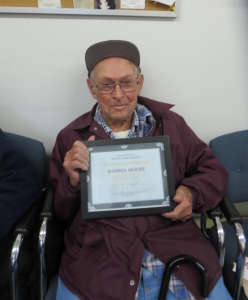
Warren F. Moore Memories
History Mystery | Apr 21, 2021
HISTORY MYSTERY: Warren F. Moore Memories

